Tom's Hardware Verdict
The Corsair CX550F offers good performance and high efficiency. The cherry on top for some of you will be the white color option and the RGB lighting.
Pros
- +
Full power at 47 degrees Celsius
- +
Good transient response at 12V
- +
Efficient
- +
Modern platform
- +
Rifle bearing fan
- +
Low leakage current
- +
Low conducted EMI
- +
Compatible with the Alternative Low Power Modes
- +
Fully modular
- +
Highly-customizable RGB lighting
- +
Comes in two colors
- +
5-year warranty
Cons
- -
Not so affordable
- -
Loose load regulation
- -
Lower than 17ms hold-up time
- -
Not fond of the Teapo SC caps that it uses
- -
Short distance between the peripheral connectors
Why you can trust Tom's Hardware
The CX550F is among the best mid-level PSUs featuring RGB lighting. Corsair teamed with HEC for its CX-F line, and it used a modern platform including a quality fan with advanced RGB lighting, meaning that the production costs increased; hence, the CX550F costs more than the category's average. Nonetheless, besides the eye-candy features, the unit also offers good performance and is not noisy under normal operating conditions.
If you don't care much about the RGB lighting, which is the main reason to spend more and buy the CX550F, you can also look at the Corsair CX550M and the XPG Pylon 550. Both use less advanced platforms than the CX550F yet still offer higher overall performance. If we had an RGB category in our best PSUs article for mid-level units, the CX550F could be included.
The Corsair CX550F is the lowest capacity member of the corresponding line, which has three members. They all feature RGB lighting and are based on a modern HEC platform. Moreover, they come in two colors, black and white, and all their cables are modular. The CX550F is rated Bronze in the 80 PLUS standard and Gold by Cybenetics. It also has a noise rating of Cybenetics-Standard++ (30-35 dB[A] average noise output). Usually, this unit goes for $90, so it isn't exactly affordable. However, during the review, Corsair offered it at a lower price of $65 and you could probably find it for less with a Corsair discount code from time to time too.



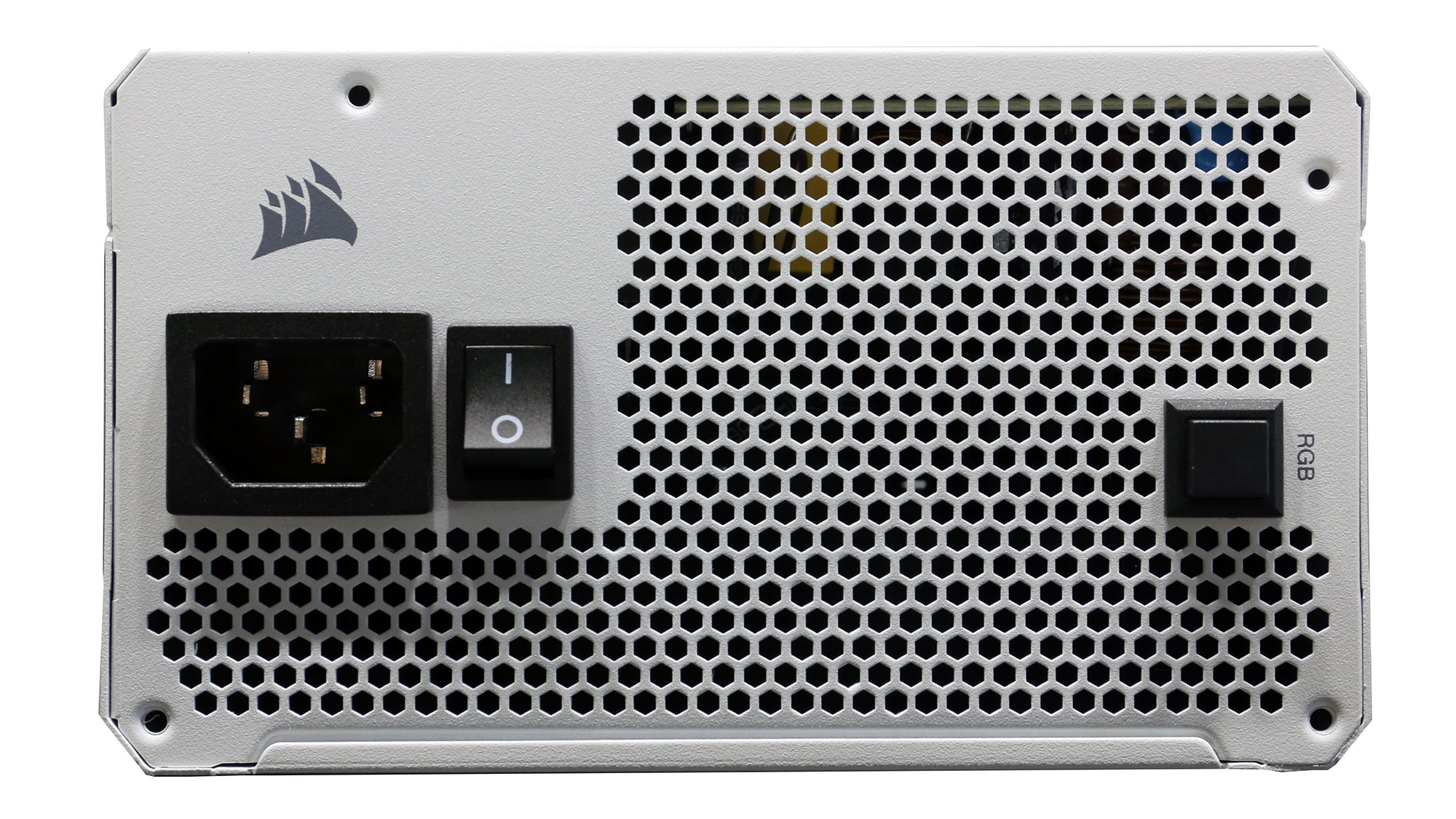


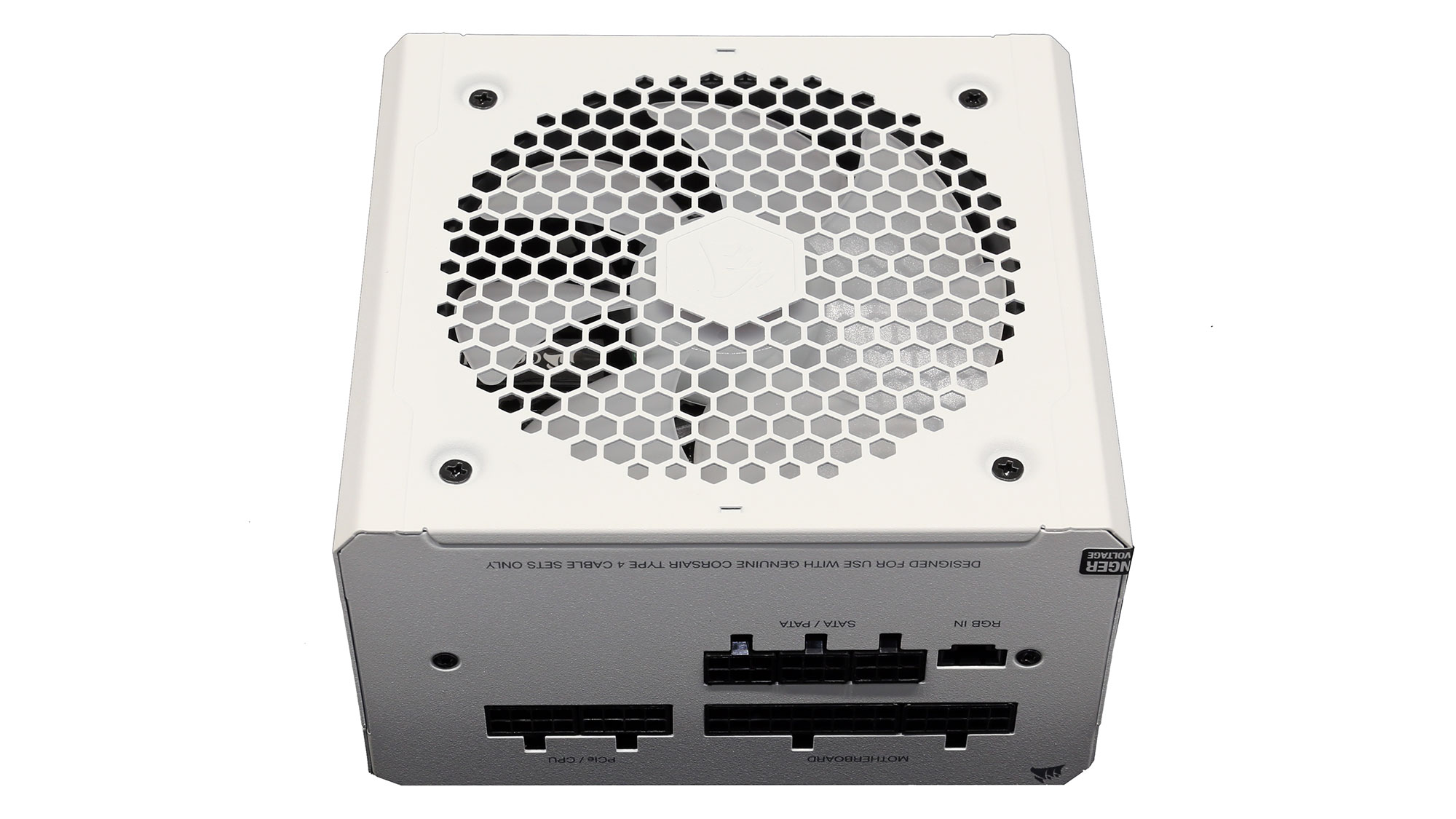


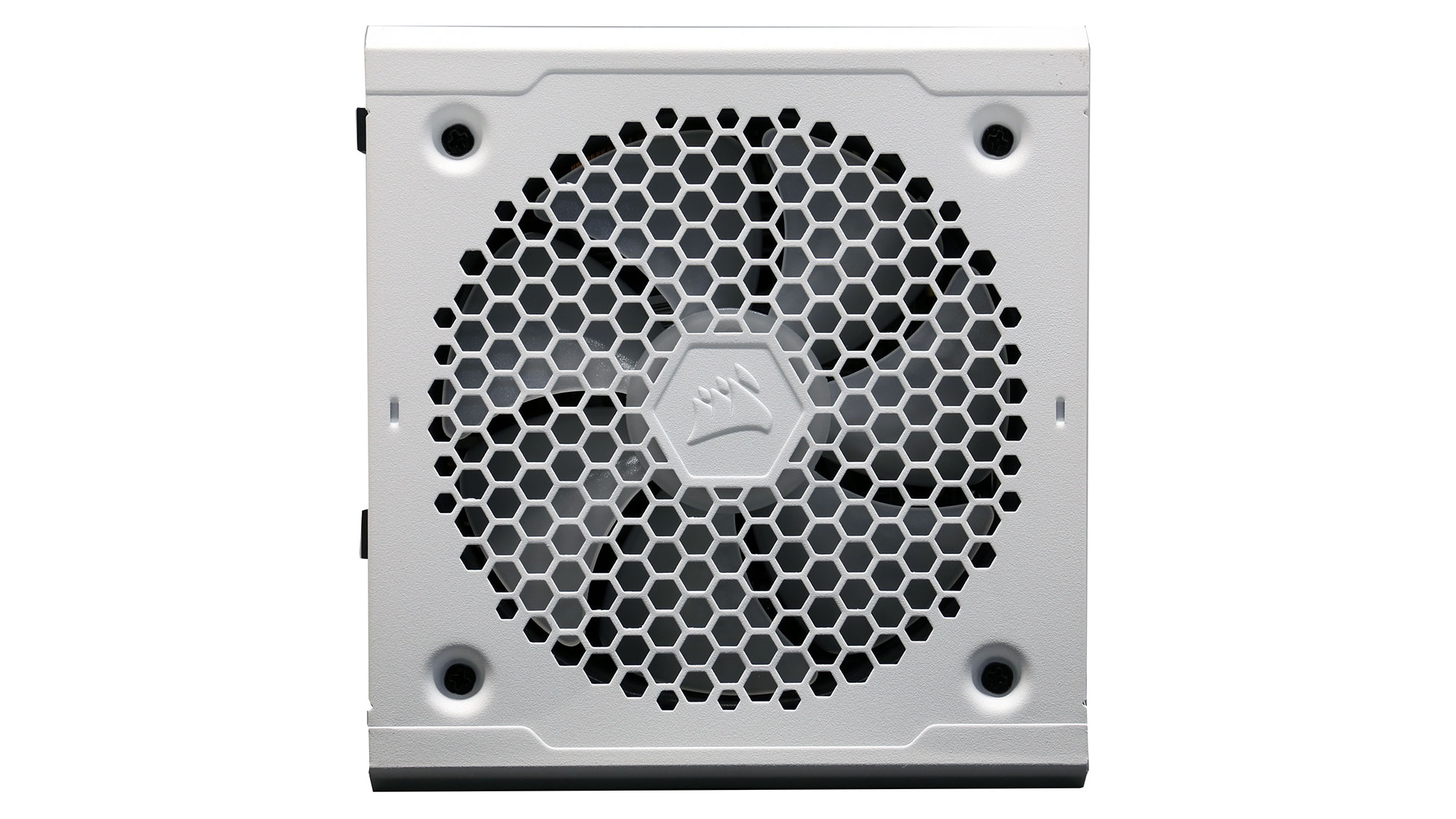

Corsair sent us a white unit that looks great with the same color modular cables and the RGB lighting effects of the fan. The RGB lighting can be controlled through the optional Corsair iCUE RGB lighting controller or a compatible mainboard through the included 5V ARGB adapter. If you don't want to buy the Corsair controller and your mainboard doesn't support RGB control/sync, you can customize the PSU's lighting via a push-button at the front.
To cycle through lighting modes, you must press and hold the button mentioned above for about three seconds. If the current mode isn't rainbow, you press the button shortly to cycle through colors. You should also remember that the push-button won't work if the PSU is in software control mode, connected to the Corsair controller or the mainboard.
The available lighting modes are: rainbow wave, rainbow, rainbow breathe, rainbow blink, sequential, solid, single blink, and pulse. You also have the option to disable the fan's lighting.


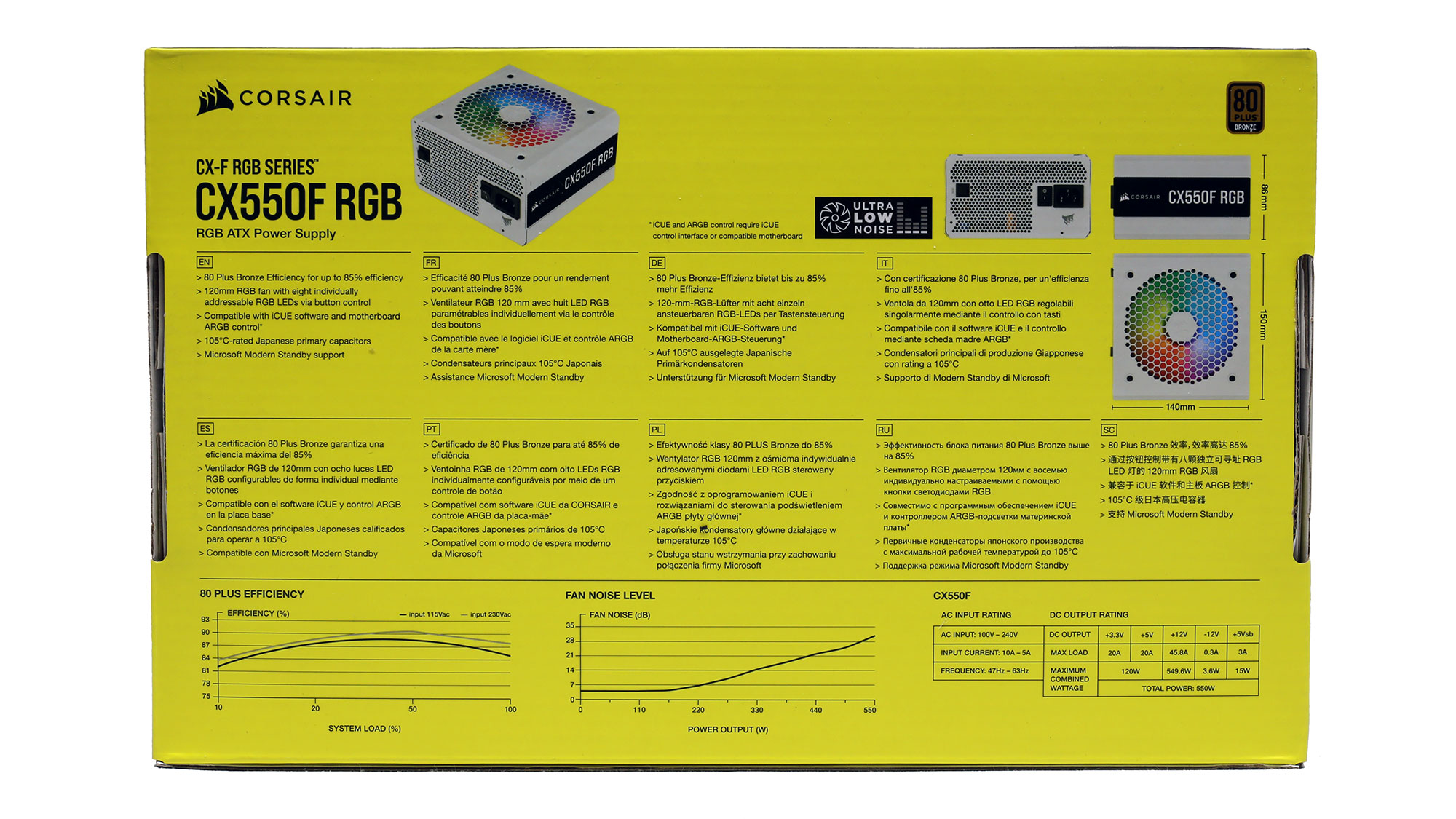
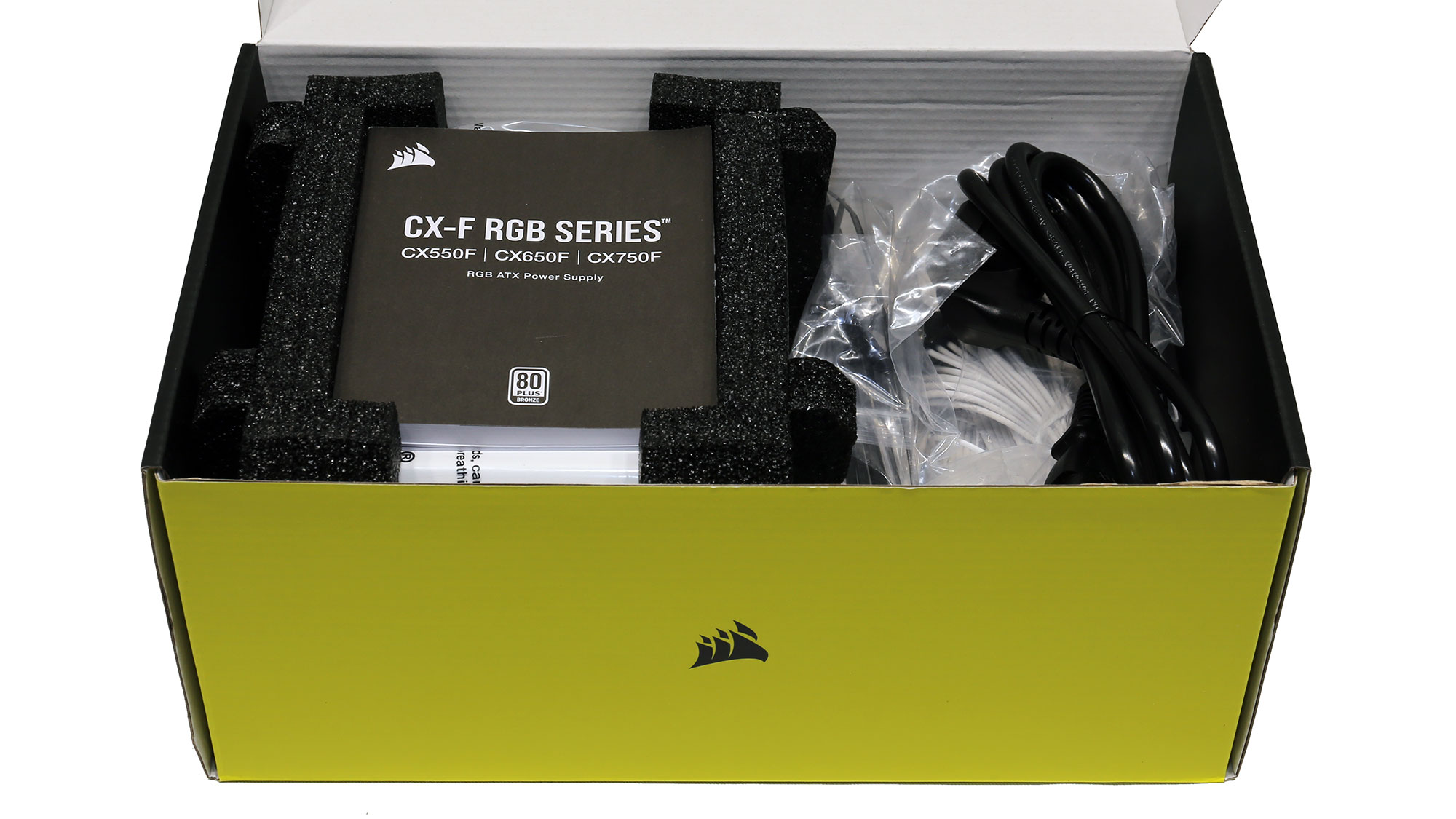
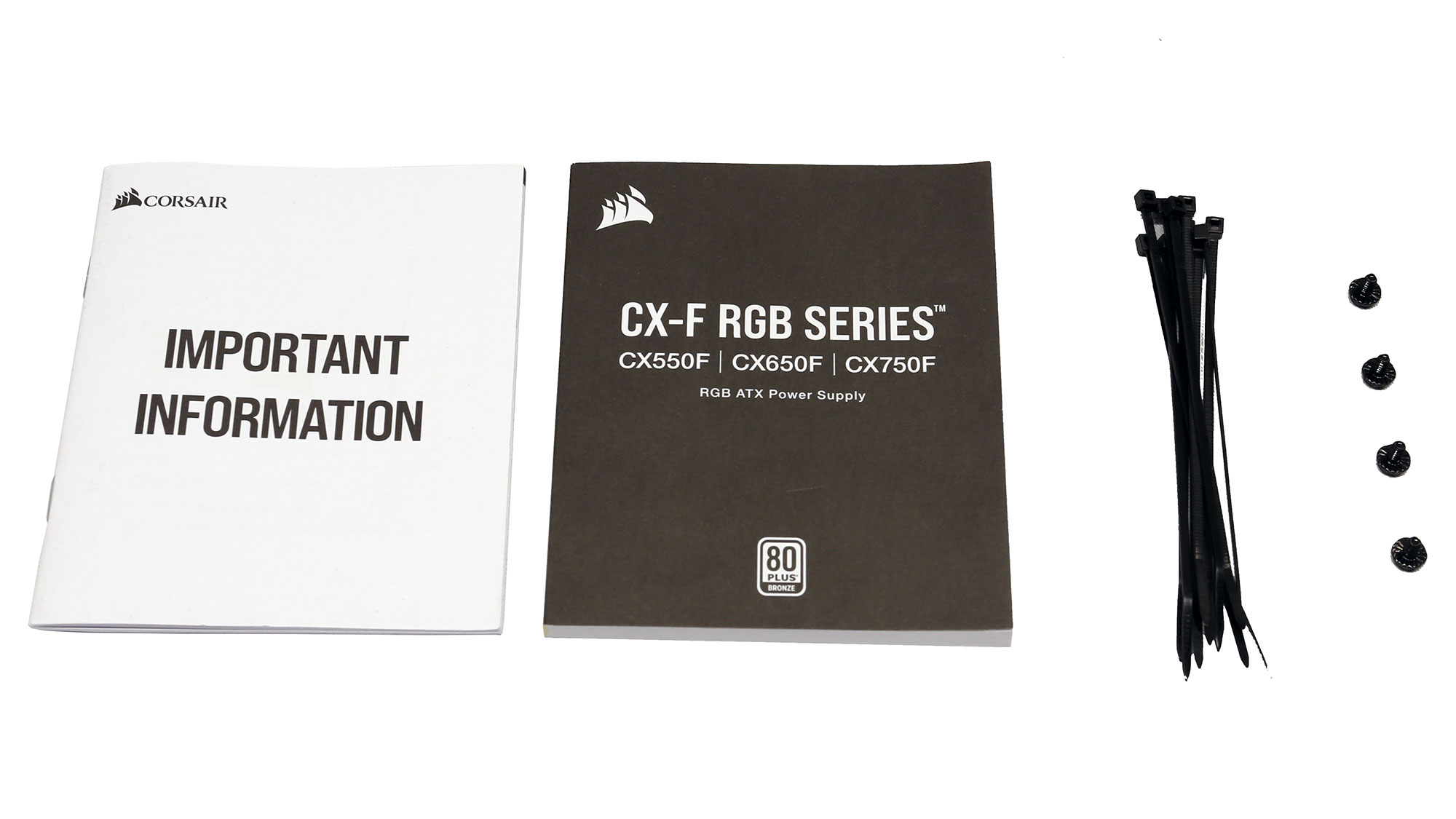


Specifications: Corsair CX550F RGB
|
Manufacturer (OEM) | HEC |
|
Max. DC Output |
550W |
|
Efficiency | 80 PLUS Bronze, Cybenetics Gold (87-89%) |
| Noise | Cybenetics-Standard++ (30-35 dB[A]) |
|
Modular |
✓ (Fully) |
|
Intel C6/C7 Power State Support |
✓ |
|
Operating Temperature (Continuous Full Load) | 0 - 40°C |
|
Over Voltage Protection |
✓ |
|
Under Voltage Protection |
✓ |
|
Over Power Protection |
✓ |
|
Over Current (+12V) Protection |
✓ |
|
Over Temperature Protection |
✓ |
|
Short Circuit Protection |
✓ |
|
Surge Protection |
✓ |
|
Inrush Current Protection |
✓ |
|
Fan Failure Protection |
✗ |
|
No Load Operation |
✓ |
|
Cooling | 120mm Rifle Bearing Fan (NR120L) |
|
Semi-Passive Operation |
✗ |
|
Dimensions (W x H x D) |
150 x 85 x 140mm |
|
Weight |
1.34 kg (2.95 lb) |
|
Form Factor | ATX12V v2.4, EPS 2.92 |
|
Warranty | 5 years |
Power Specifications: Corsair CX550F RGB
| Rail | 3.3V | 5V | 12V | 5VSB | -12V | |
| Max. Power | Amps | 20 | 20 | 45.8 | 3 | 0.3 |
| Watts | 120 | 549.6 | 15 | 3.6 | ||
| Total Max. Power (W) | 550 |
Cables & Connectors of Corsair CX550F RGB
| Modular Cables | Cable Count | Connector Count (Total) | Gauge | In Cable Capacitors |
|---|---|---|---|---|
| ATX connector 20+4 pin (610mm) | 1 | 1 | 18-20AWG | No |
| 4+4 pin EPS12V (650mm) | 1 | 1 | 18AWG | No |
| 6+2 pin PCIe (600mm+150mm) | 1 | 2 | 16-18AWG | No |
| SATA (450mm+115mm+115mm+115mm) | 1 | 4 | 18AWG | No |
| SATA (500mm+100mm+100mm) | 1 | 3 | 18AWG | No |
| 4 pin Molex (450mm+100mm+100mm+100mm) | 1 | 4 | 18AWG | No |
| iCUE RGB cable (500mm) | 1 | 1 | 28AWG | No |
| Motherboard ARGB cable (300mm) | 1 | 1 | 28AWG | No |
| AC Power Cord (1380mm) - C13 coupler | 1 | 1 | 18AWG | - |
The PSU's low capacity doesn't allow for more than one EPS and two PCIe connectors, with the last installed on the same cable. However, the number of peripheral connectors is adequate.
Get Tom's Hardware's best news and in-depth reviews, straight to your inbox.
All cables are long enough, but as usual, we would like to see longer distances between the peripheral connectors. However, the lack of in-cable caps is good news for most users It is also nice to see thicker 16AWG gauges up to the first PCIe connector for lower voltage drops since the same gauges have to handle a pair of these connectors.
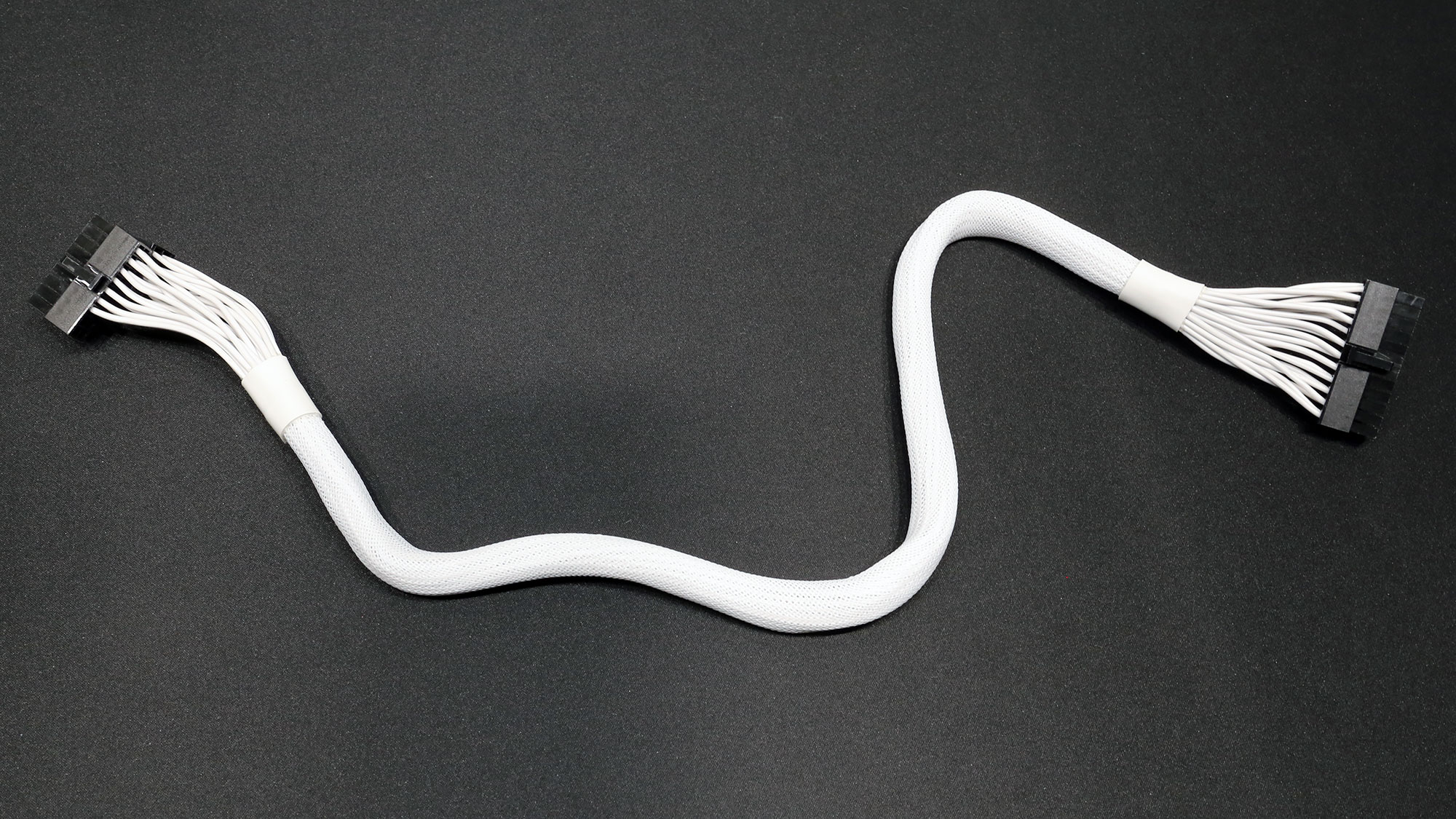


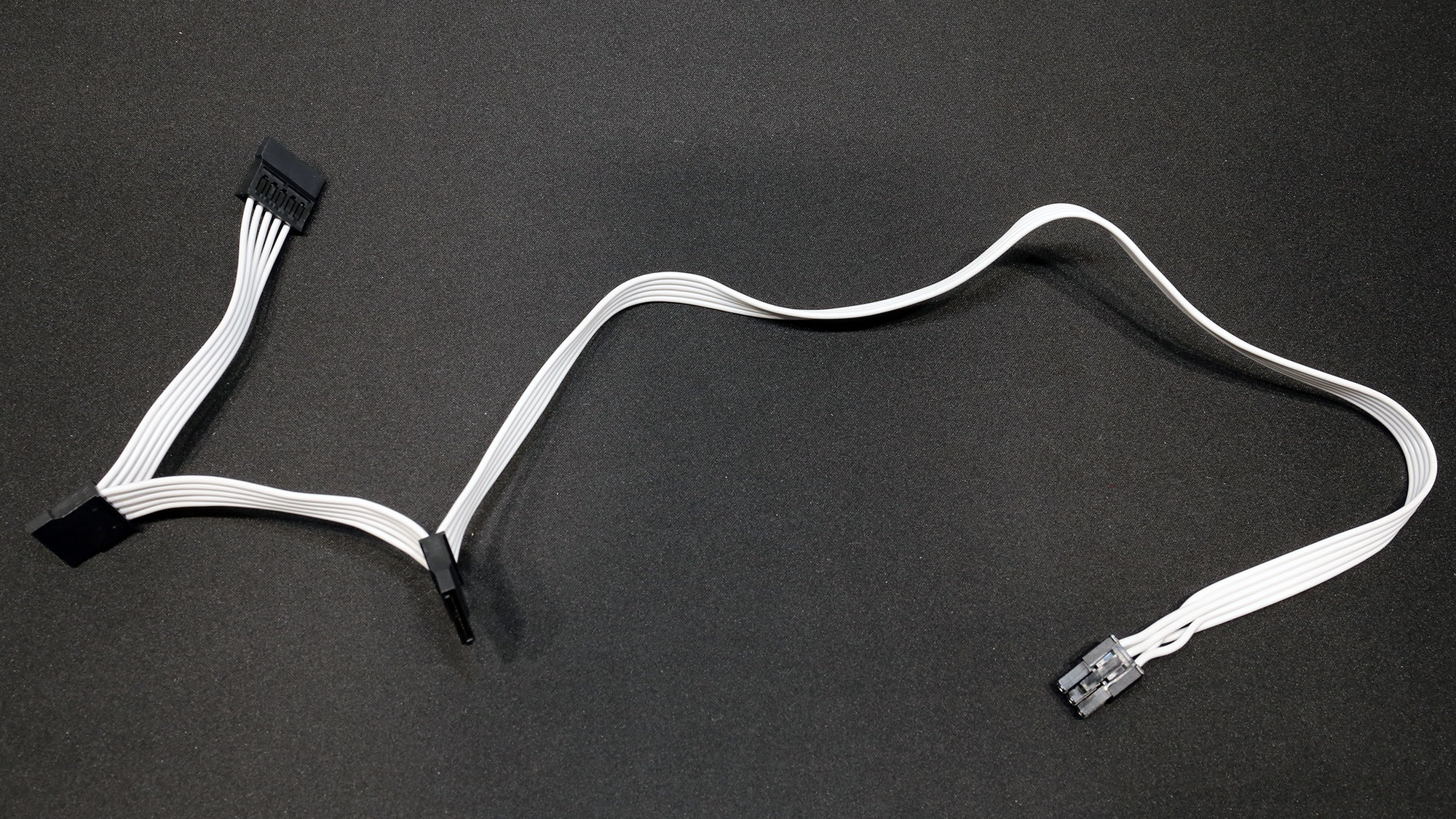




Component Analysis of Corsair CX550F RGB
We strongly encourage you to look at our PSUs 101 article, which provides valuable information about PSUs and their operation, allowing you to better understand the components we're about to discuss.
| General Data | - |
| Manufacturer (OEM) | HEC |
| PCB Type | Single Sided |
| Primary Side | - |
| Transient Filter | 4x Y caps, 2x X caps, 1x CM chokes, 1x DM chokes, 1x MOV, 1x Discharge IC (CAP200DG) |
| Inrush Protection | NTC Thermistor SCK-037 |
| Bridge Rectifier(s) | 1x GBU10K (800V, 10A @ 100°C) |
| APFC MOSFETs | 2x Infineon IPA60R280P7S (650V, 8A @ 100°C, 0.28Ohm) |
| APFC Boost Diode | 1x Cree C3D04060A (600V, 4A @ 160°C) |
| Hold-up Cap(s) | 1x Hitachi (400V, 330uF, 2,000h @ 105°C, HU) |
| Main Switchers | 2x Champion GPT18N50DG (500V, 18A , 0.27Ohm) |
|
APFC Controller | |
| IC Driver | MPS MP6924A |
| Resonant Controller | MPS HR1001C |
| Topology |
Primary side: APFC, Half-Bridge & LLC converter Secondary side: Synchronous Rectification & DC-DC converters |
| Secondary Side | - |
| +12V MOSFETs | 4x Nexperia PSMN8R3-40YS (40V, 50A @ 100°C, 16mOhm @ 175°C) |
| 5V & 3.3V | DC-DC Converters: 8x Potens Semiconductor PDD3906 (30V, 51A @ 100°C, 6mOhm) PWM Controllers: ANPEC APW7073 |
| Filtering Capacitors | Electrolytic: 12x Teapo (1-3,000h @ 105°C, SC) , 2x Nippon Chemi-Con (1-5,000h @ 105°C, KZE) Polymer: 16x Teapo |
| Supervisor IC | Weltrend WT7527 (OCP, OVP, UVP, SCP, PG) |
| Fan Model | Corsair NR120L (120mm, 12V, 0.22A, RGB, Rifle Bearing Fan) |
| 5VSB Circuit | - |
| Rectifier | 1x PS1060L SBR (60V, 10A) |
| Standby PWM Controller | Power Integrations TNY290PG |
| -12V | - |
| Rectifier | 1x KEC KIA7912PI (-12V, 1A) |
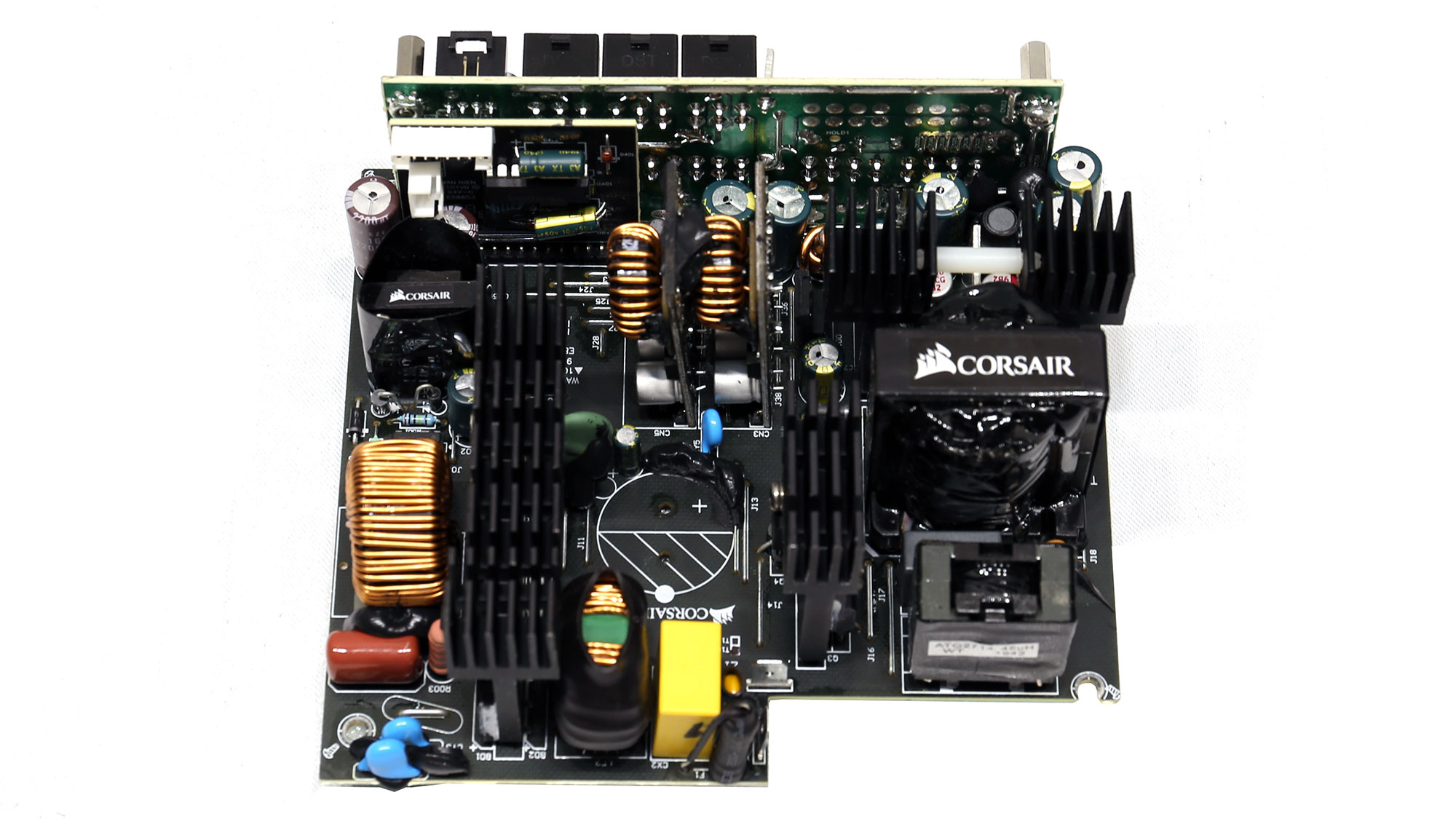



Corsair helped HEC build this platform, which is advanced for a merely Bronze unit in the 80 PLUS scheme. The CX550F manages to be a little above the lowest Gold efficiency threshold in the Cybenetics scale, earning the corresponding efficiency certification. Instead of the typical double-forward topology we usually find in this category, HEC used a half-bridge topology and an LLC resonant converter for increased efficiency. Moreover, we see a synchronous design and a pair of DC-DC converters for the minor rails on the secondary side.

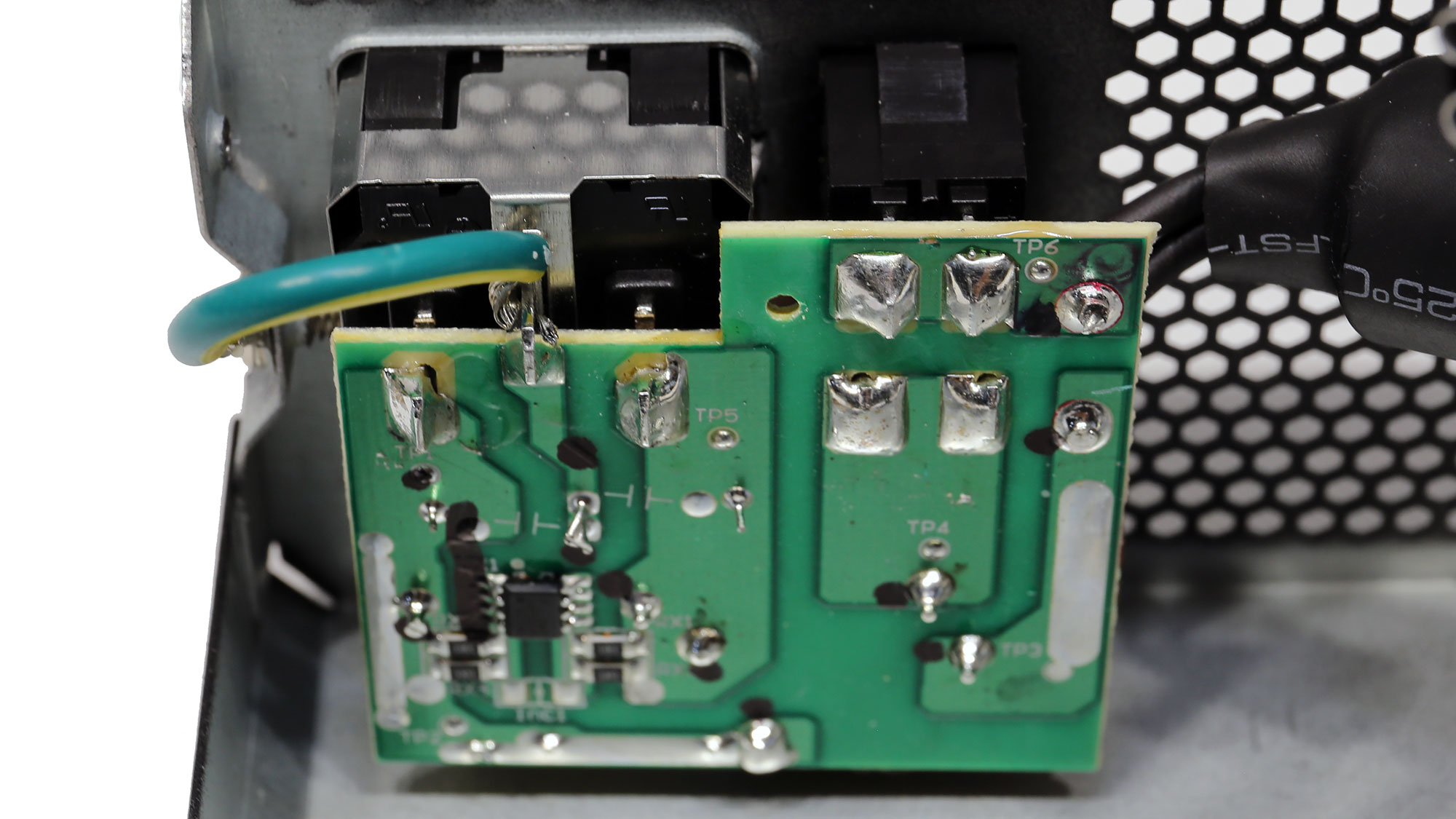

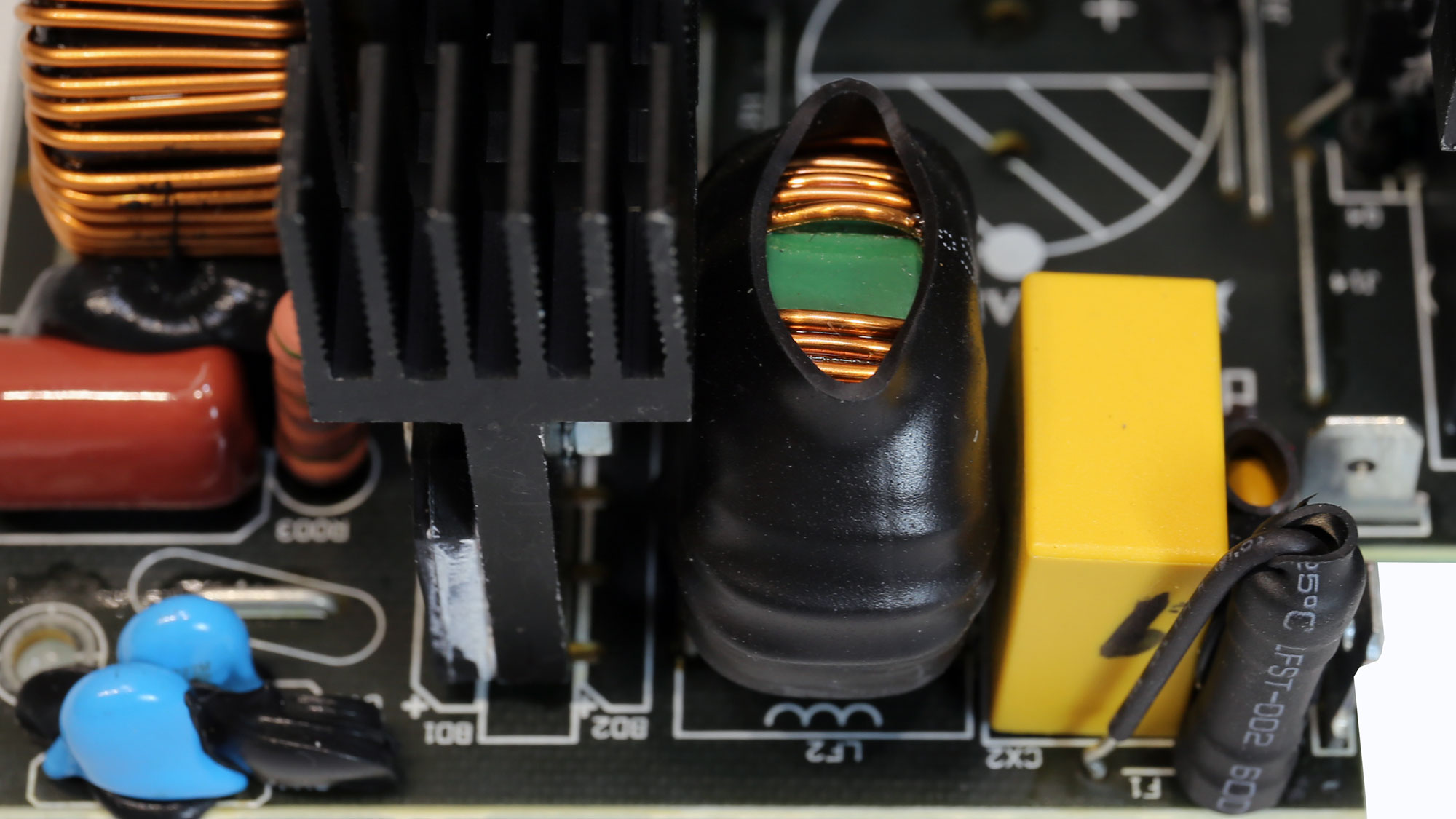
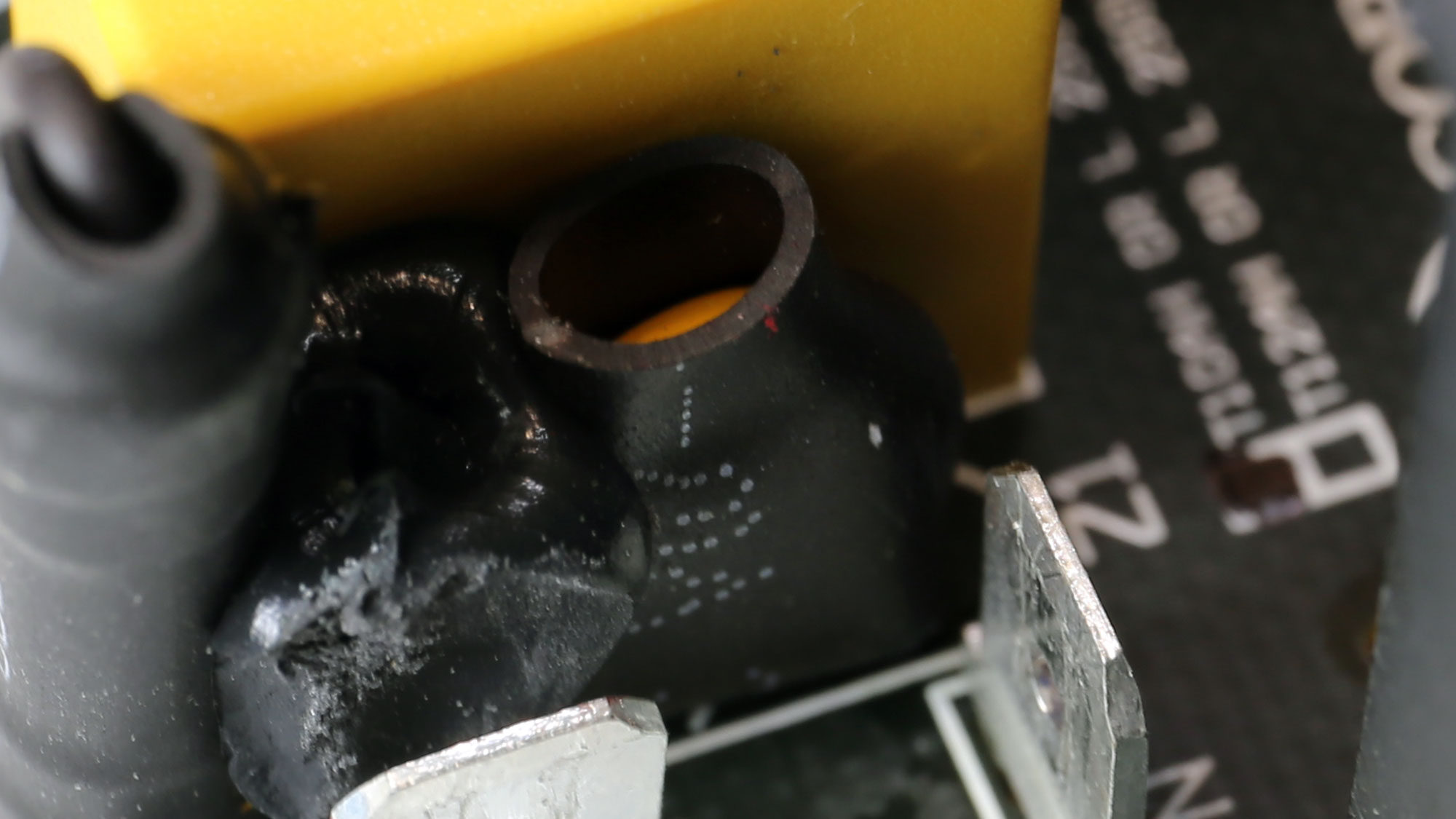

The EMI filtering stage includes all necessary parts, so we expect low EMI emissions. There is also a discharge IC to restrict energy losses on the bleeding resistors. Moreover, there is a MOV for voltage surges and an NTC thermistor for lower inrush currents. The latter is not supported by a bypass relay, which is a bummer.


The single bridge rectifier can handle up to 10 Amperes.

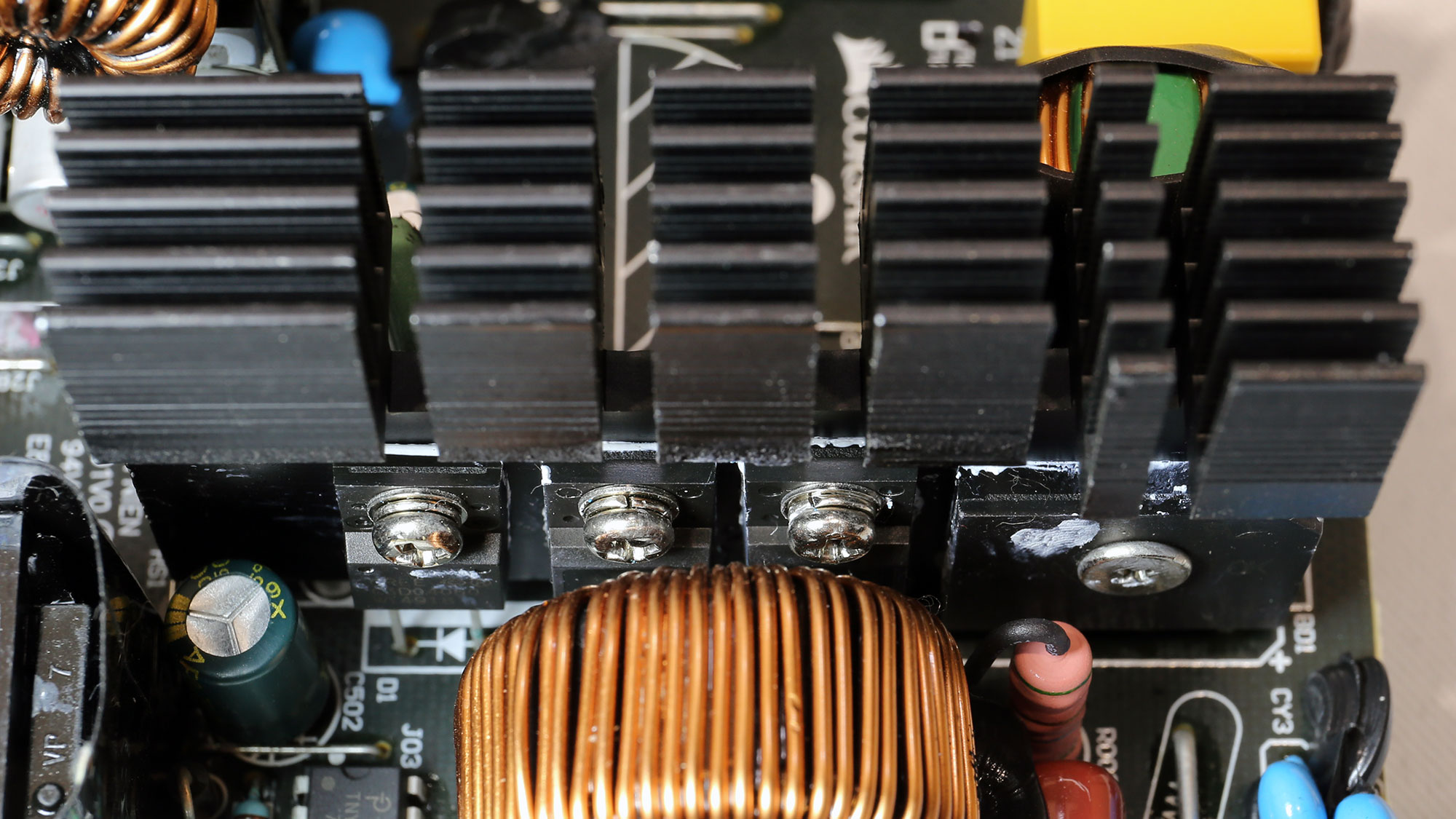


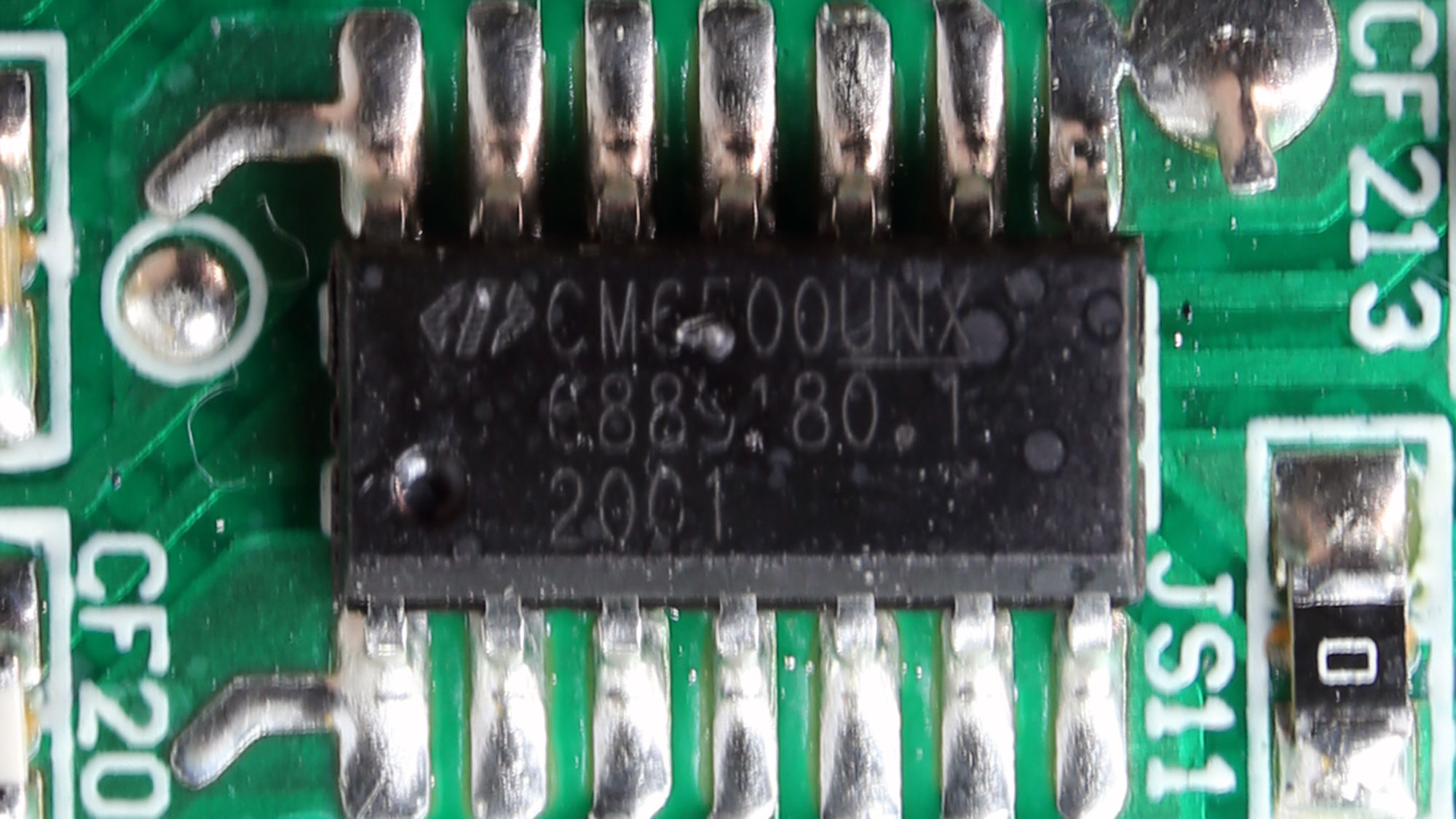
The APFC converter uses two Infineon FETs and a single boost diode provided by the CREE. The bulk cap is by Hitachi, which sold its capacitor business to a Chinese brand.
The APFC controller is a Champion CM6500 IC. Another Champion IC, the CM03X, is used to restrict vampire power by cutting off the APFC converter during standby.
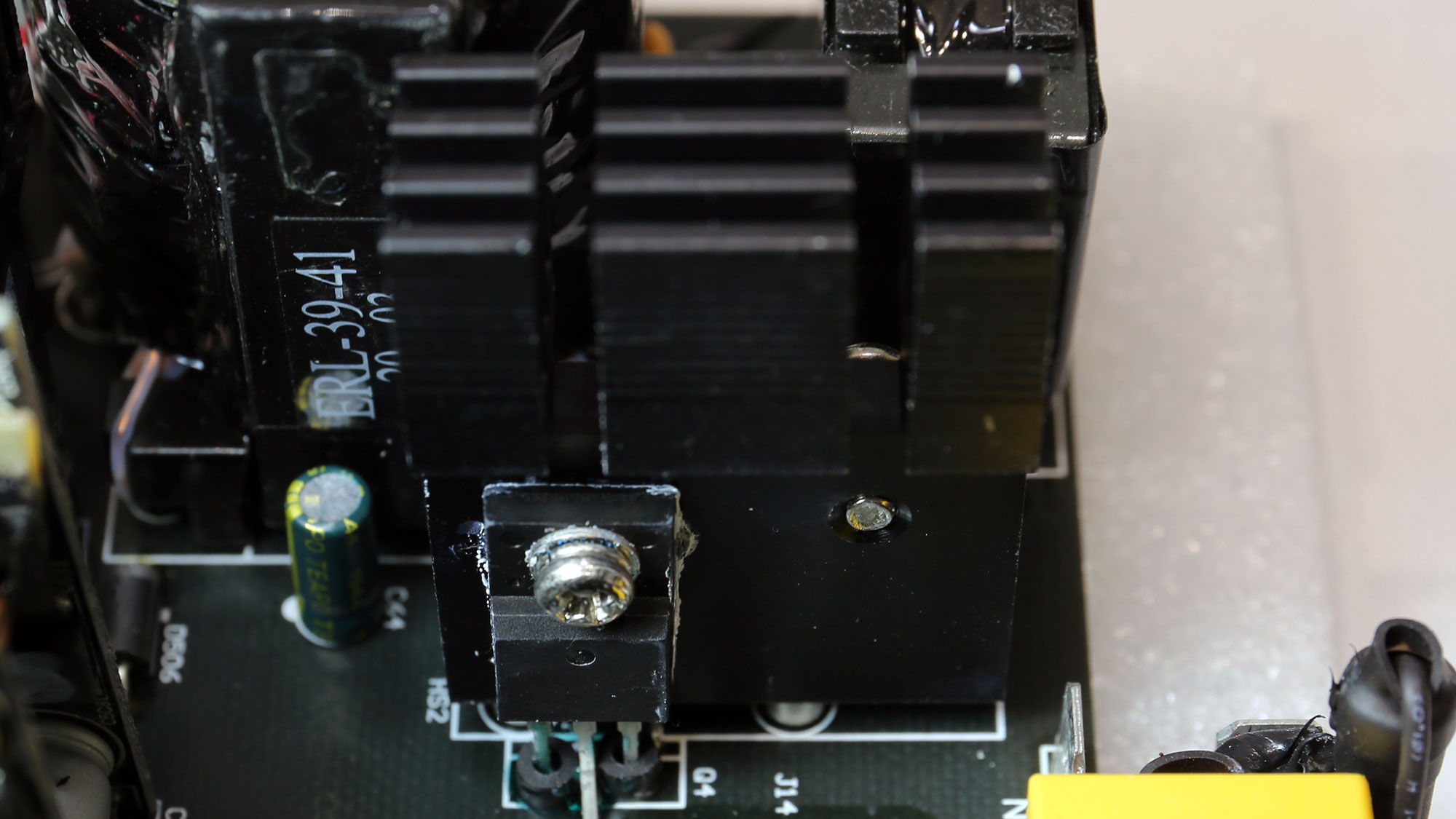



The main FETs are arranged in a half-bridge topology, while an LLC resonant converter boosts efficiency. It is controlled by an MPS HR1001C IC.





The FETs that regulate the +12V rail are on the solder side of the main PCB. Four Nexperia FETs are used in total. The minor rails are generated through eight FETs and use an Anpec PWM controller.
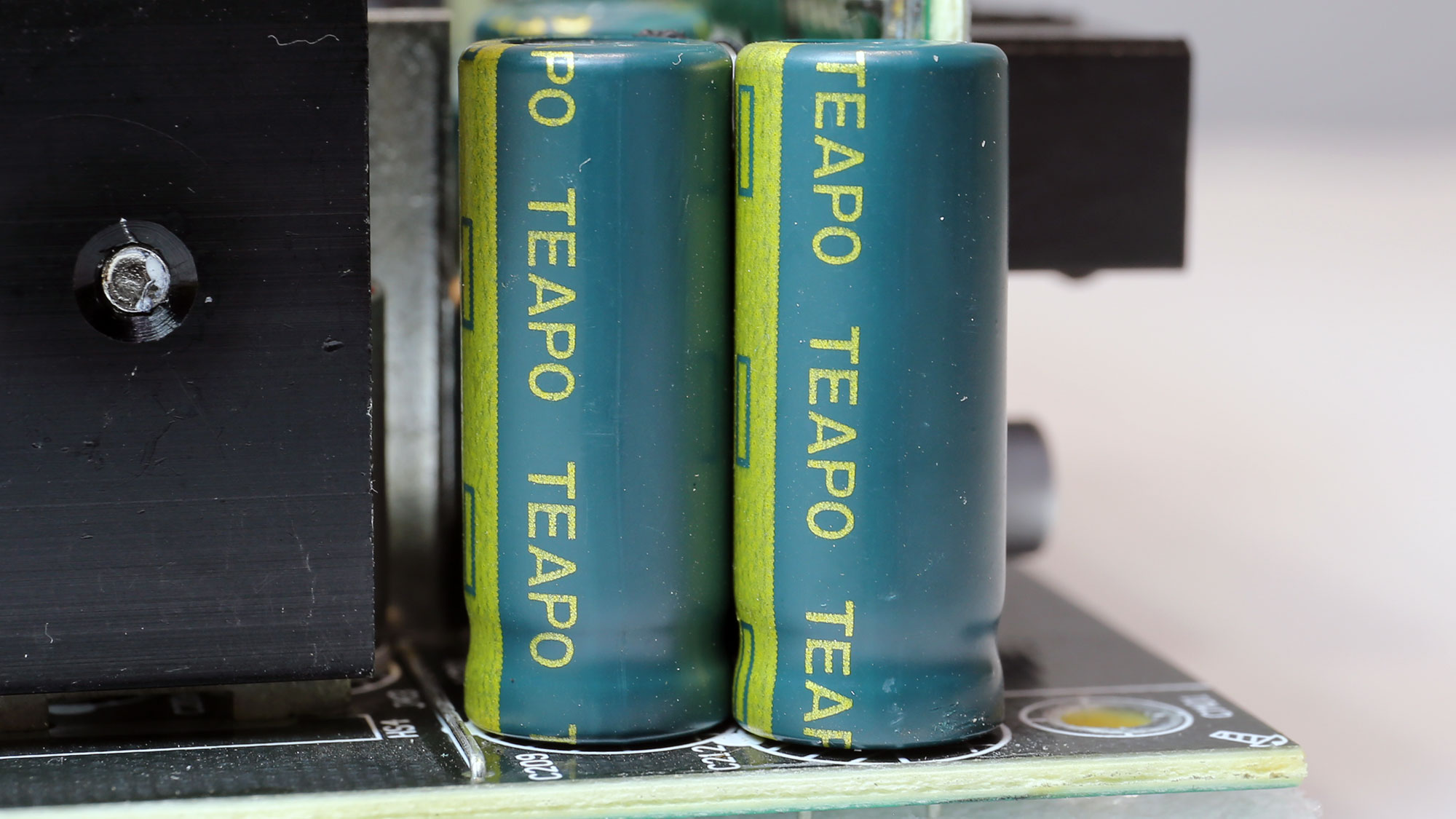



The electrolytic filtering caps on the secondary side are mostly provided by Teapo, and belong to the SC line. A large number of polymer caps are also used for ripple filtering purposes.



The 5VSB circuit uses a single SBR on its secondary side. The PWM controller is a Power Integrations TNY290PG IC.



Several polymer caps are installed on the modular board.

The supervisor IC is a Weltrend WT7527, supporting all essential protection features but OTP (Over Temperature Protection).




Soldering quality is good


The cooling fan uses a rifle bearing, so it will last a long time. Its RGB lighting is also of good quality.
MORE: Best Power Supplies
MORE: How We Test Power Supplies
MORE: All Power Supply Content
Current page: Specifications and Part Analysis
Next Page Load Regulation, Hold-Up Time, Inrush & Leakage Current, Efficiency and Noise
Aris Mpitziopoulos is a contributing editor at Tom's Hardware, covering PSUs.
-
Panzerbjorne39 Curious why a rifle bearing fan is listed here under a Pro. Isn’t that the cheaper and louder of the common fan bearings?Reply